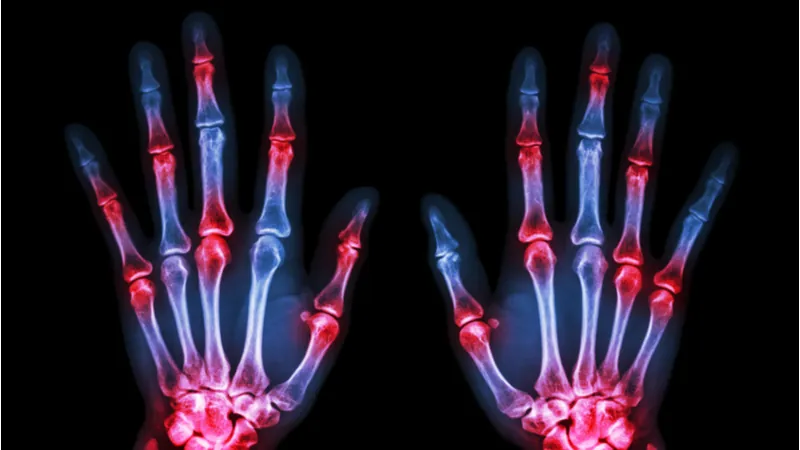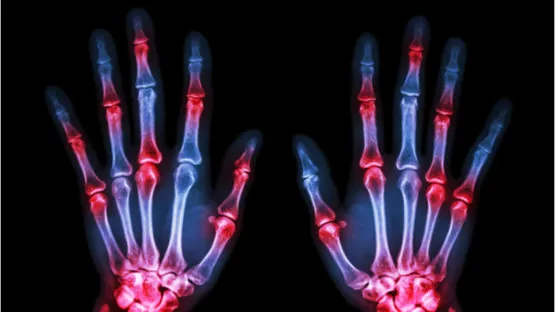A study published in Aging has found that osteopontin’s effects on bone remodeling may be at least partially responsible for osteoarthritis.
What is osteopontin?
Osteopontin is a glycoprotein found in the extracellular matrix of bone tissue. This is a cytokine that is used in intercellular communication, and it promotes both the proliferation [1] and apoptosis (cellular death) [2] of chondrocytes, the cells responsible for forming cartilage tissue, the combined effect of which, as the researchers explain, is to promote the remodeling of subchondral bone, which is directly connected to cartilage tissue.
It is also linked to an increased expression of IL-6 and IL-8 in these cells [3], two inflammatory factors that these researchers believe may be responsible for osteoarthritis. These researchers point out that most osteopontin research is focused on this line of study, while its bone remodeling qualities have not been adequately explored. Therefore, they began this study in order to discover the link between the subchondral bone effects of osteopontin and the progression of osteoarthritis.
Osteopontin is increased in osteoarthritis
The resarchers first confirmed the fact that subchondral bone osteopontin is greater in osteoarthritis suffers than in people free from the disease. Bone samples were taken from arthritis patients undergoing knee replacements as well as a control group of people who had undergone traumatic amputation, and the arthritis patients were found to have thrice the osteopontin as the control group.
A mouse model of arthritis was utilized for a closer look. The researchers discovered even starker results than in humans; osteopontin mRNA and the number of osteopontin-positive cells were many times greater in the arthritic mice than in the control group.
With this correlation confirmed, the researchers then took a deeper dive into the effects of this compound.
Osteopontin was found to accelerate osteoarthritis
To confirm the effects of osteopontin on bone turnover, the researchers examined three groups of arthritis mice alongside a control group. One group of arthritic mice was given an empty vehicle as an injection, another group was given an antibody against osteopontin, and the final group was injected with additional, recombinant osteopontin.
The results were clear and expected. The group given additional osteopontin had worse arthritis than the untreated arthritic mice, while the group given the antibody was spared many of the effects of osteoarthritis. The subchondral bone was, as expected, heavily broken down alongside the administration of osteopontin, while the antibody group retained a more normal bone morphology.
Similar experiments also found that additional osteopontin increased the formation of blood vessels within bone, while the antibody group had fewer of these vessels; this is a strongly negative effect of osteoarthritis and leads to further joint degeneration [4]. Additional osteopontin accelerated the decline of joint cartilage that is associated with osteoarthritis, while reducing osteopontin decreased this decline.
The number of osteoclasts, cells that degrade bone tissue, was found to increase with osteopontin; interestingly, the researchers found that osteoblasts (which create bone tissue) were responsible for expressing additional osteopontin in their arthritic mouse model. The expression of osteopontin by osteoblasts has long been known to be part of the regulated process of bone maintenance [5], and it seems likely that this process has gone awry in osteoarthritis.
Conclusion
Osteopontin may be a low-hanging fruit in the treatment of osteoarthritis. While some of the signaling biochemistry was explored in this study, no osteopontin-focused treatment has yet been developed for human use. If targeting osteopontin can have the same positive effects for human arthritis patients as it did for the mice in this study, such an approach may possibly lead to an effective intervention against this crippling disease.
Literature
[1] Liang, J., Xu, L. I., Zhou, F., Liu, A. M., Ge, H. X., Chen, Y. Y., & Tu, M. (2018). MALAT1/miR-127-5p regulates osteopontin (OPN)-mediated proliferation of human chondrocytes through PI3K/Akt pathway. Journal of cellular biochemistry, 119(1), 431-439.
[2] Yumoto, K., Nifuji, A., Rittling, S. R., Tsuchiya, Y., Kon, S., Uede, T., … & Noda, M. (2012). Osteopontin Deficiency Suppresses Tumor Necrosis Factor-a–Induced Apoptosis in Chondrocytes. Cartilage, 3(1), 79-85.
[3] Yang, Y., Gao, S. G., Zhang, F. J., Luo, W., Xue, J. X., & Lei, G. H. (2014). Effects of osteopontin on the expression of IL-6 and IL-8 inflammatory factors in human knee osteoarthritis chondrocytes. Eur Rev Med Pharmacol Sci, 18(23), 3580-3586.
[4] Suri, S., & Walsh, D. A. (2012). Osteochondral alterations in osteoarthritis. Bone, 51(2), 204-211.
[5] Sodek, J., Chen, J., Nagata, T., Kasugai, S., Todescan Jr, R., Li, I. W., & Kim, R. H. (1995). Regulation of osteopontin expression in osteoblasts. Annals of the New York Academy of Sciences, 760(1), 223-241.





